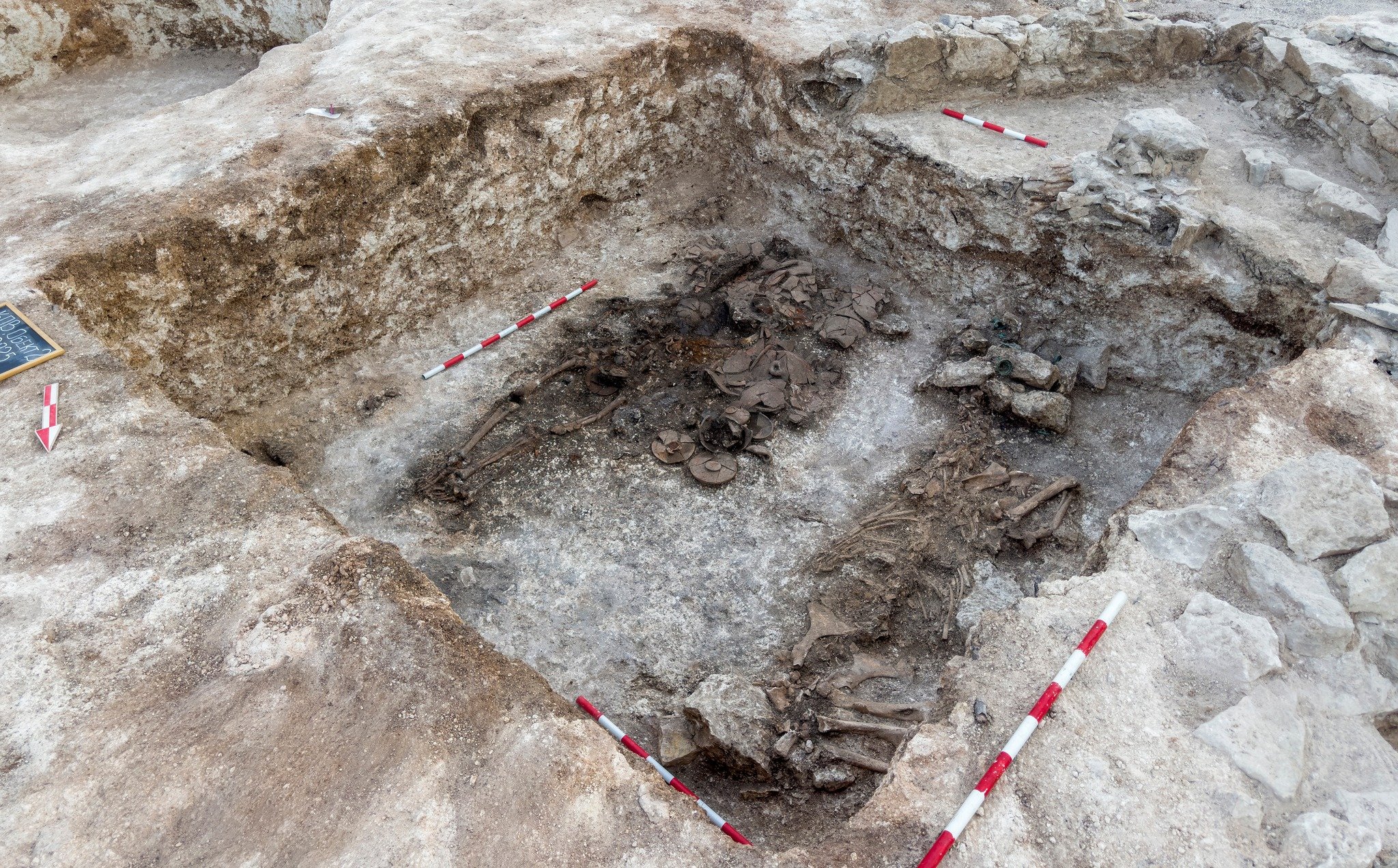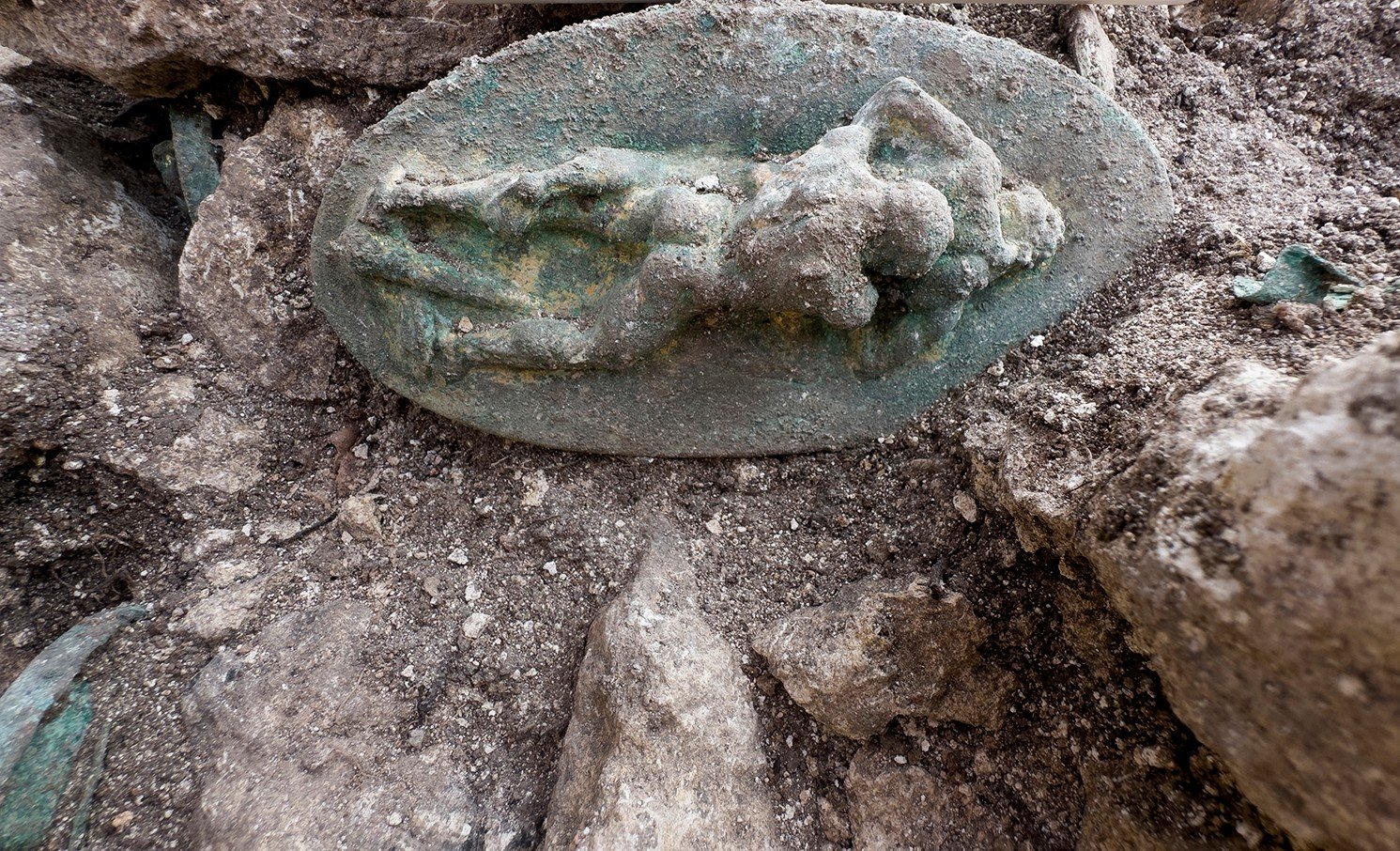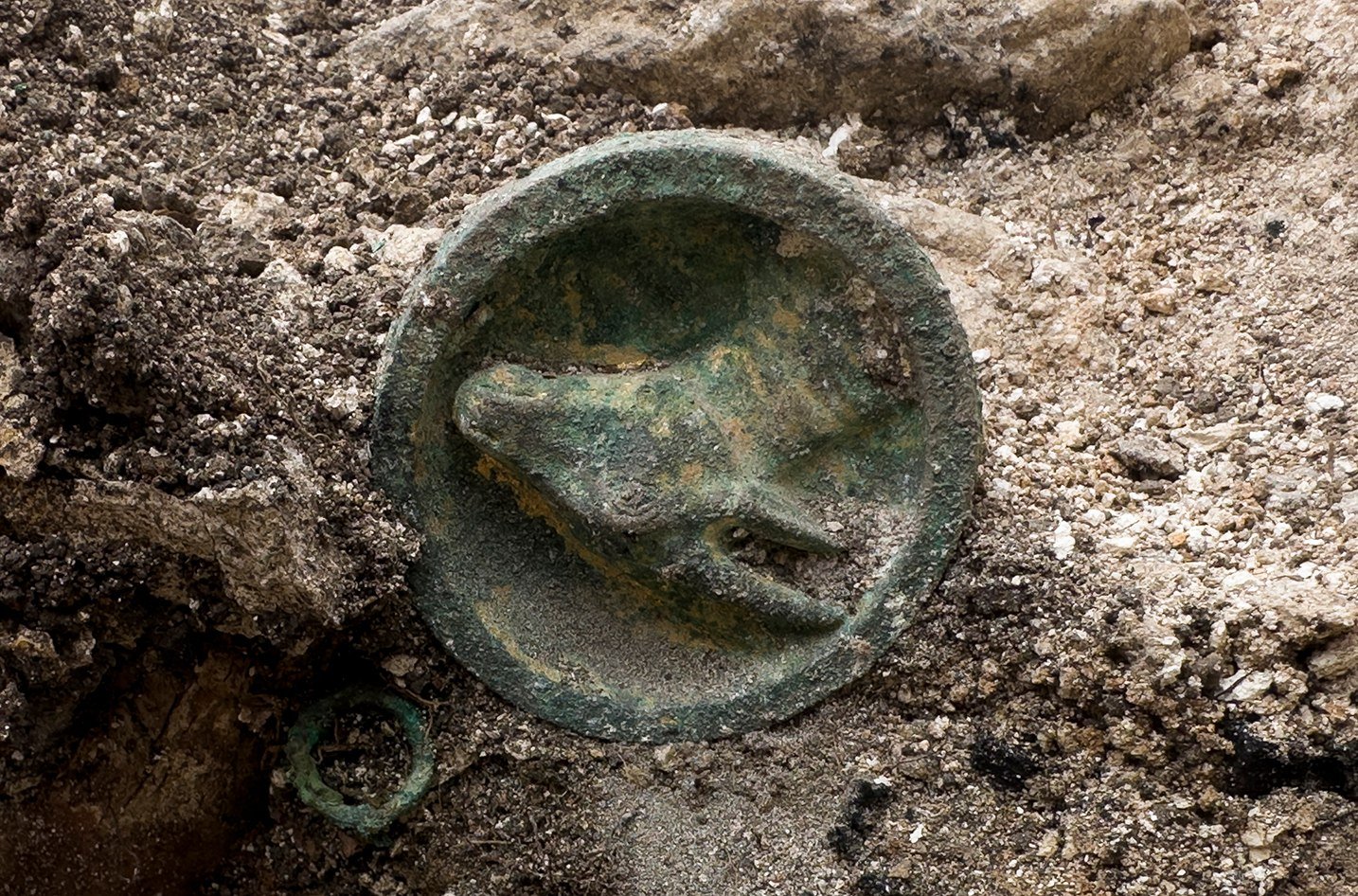
Archaeologists in southern Bulgaria have uncovered a richly decorated Hellenistic-Era tomb and sanctuary, dating to the 2nd century BC, believed to belong to a Thracian warrior of elite status. The discovery, made near the village of Kapitan Petko Voivoda, sheds light on the burial practices and social hierarchy of ancient Thrace, offering rare insight into Late Hellenistic funerary traditions in Bulgaria.
The find was made during rescue excavations along the planned route of a cable connection between Topolovgrad and a nearby solar park. The work was led by archaeologists Vladimir Staykov and Deyan Dichev of the Bulgarian Academy of Sciences, with scientific consultation from noted Thracian scholar Dr. Daniela Agre.
An untouched warrior’s grave with elite symbols
Researchers uncovered an undisturbed grave pit at the center of the site measuring 3 meters by 3 meters (9.84 feet by 9.84 feet) and 1 meter (3.3 feet) deep. The burial contained the body of a warrior-aristocrat, preliminarily estimated to have been between 35 and 40 years old, along with his riding horse placed to the left in keeping with elite Thracian customs.
A gilded silver ceremonial wreath was positioned on the warrior’s head — a symbol of high status, reserved for nobles and military leaders, and believed to guide the deceased into the afterlife. The craftsmanship indicates it was made specifically for this burial, highlighting the skill of Hellenistic-era Thracian artisans.

Weapons, luxury goods, and imported vessels
The warrior’s grave contained a rich array of artifacts. Weapons included iron spears, a curved sword known as a machaira (Greek: Μάχαιρα), and a shield with an iron umbo. Jewelry finds featured a silver fibula, bracelet, and ring. Ceramic and glass vessels, some imported from Mediterranean centers, suggest far-reaching trade connections.
Above the horse’s head, archaeologists found ornate gilded bronze harness decorations. The most striking piece was a massive forehead plate in high relief depicting a scene from Greek mythology, demigod Heracles defeating the giant Antaeus.

Experts describe it as a masterpiece of ancient sculpture and a rare example of high-class Hellenistic art. Animal figures, likely representing beasts vanquished by Heracles, adorned the cheekpieces.

Linked to the lavish 2024 ruler’s tomb
The grave lies just 60 meters (200 feet) from a lavish cremation burial uncovered in 2024 beneath a small mound. That earlier discovery — also led by Dr. Agre’s team — revealed the richest tomb of a ruler from the Late Hellenistic period on Bulgarian soil, complete with weaponry, rare gold jewelry, and a gold-inlaid dagger.
Archaeologists state that the proximity and similarities between the two graves suggest that the site was part of a dynastic center and necropolis for Thracian elites during the Late Hellenistic period.
Preservation, display, and future research
Artifacts from the ruler’s tomb, discovered in 2024, are stored in a secure vault at the Historical Museum in Topolovgrad, and the latest finds are expected to join the collection.
Ongoing excavations continue to reveal the complex relationship between Thracian traditions and Hellenistic and Roman influence during this transitional period. Researchers believe the area holds further evidence of a high-status necropolis that could redefine understanding of Thracian political and cultural power in the 2nd century BC.

